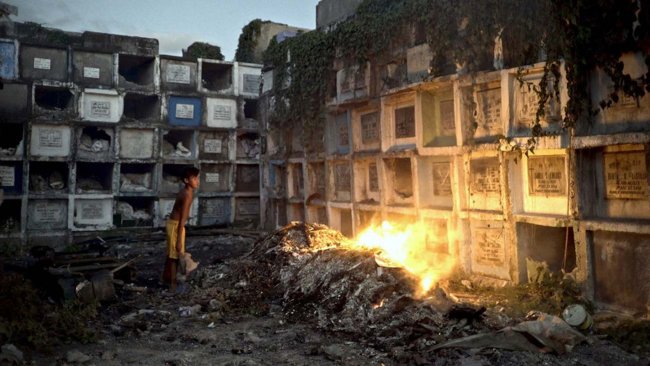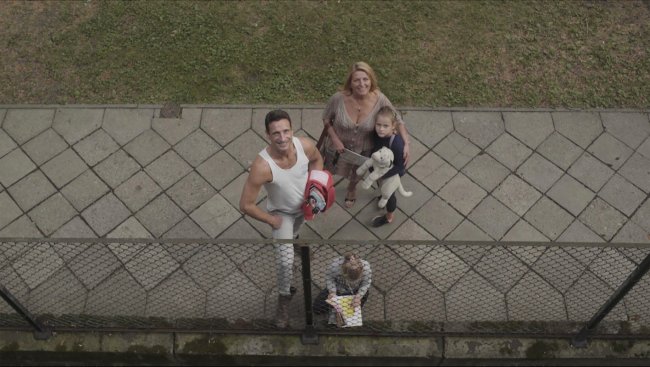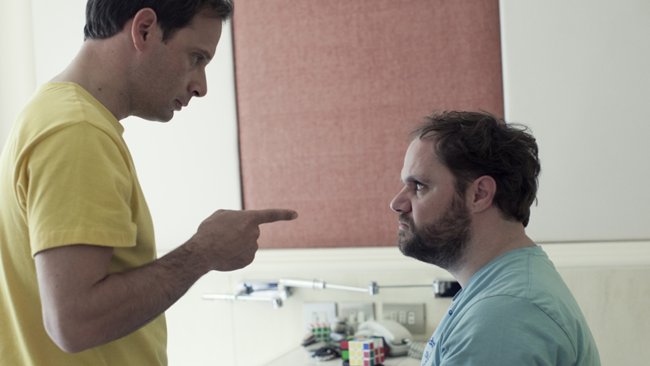Undine
[…] The philological crux of dealing with mobile origins therefore reveals nothing but the fundamental delay that constitutes the “original” substance, matter and starting point of Petzold’s films.
[…] Their movements undulate between fusion and separation, proximity and distance; and to get this movement Petzold returns to the old technique of German Romantism of displaying delaying caesurae. «Undine» could be summarised as a long embracing with countless accidents.
[…] More than taking a position, Petzold seems to criticise the different ways of trying to master or, better, dominate the city tout court, for they all disrespect its fluid essence. Genius temporis of Berlin is transformation without regressions or forced projections; and genius loci of Berlin is water, Undine’s element. Undine equals Berlin.
Text: Giuseppe Di Salvatore
This article contains a third-party video. If you would like to watch the video, please adjust your settings.
Podcast
Audio-Reading
Text: Giuseppe Di Salvatore | Reading: Nils Jensen | Editing: Annatina Stalder
Find a list of all our Podcasts here.
This is a love story, but I will resist the urge to speak immediately of Undine and Christoph’s love – and Johannes’ one, and Monika’s one – and will instead start from the separation, from the prosodic, silent beginning of the film. Separation, distance, and breaks are all figures that constantly punctuate these love stories and manifest themselves through Marcello’s infamous adagio. This piece of music is a sort of third character, one that plays with the lovers as an obsessive refrain, an obstacle that musically expands and pushes the lovers to go, again and again, seeking one another.
The philological crux
What is today known as the Adagio by Benedetto Marcello has for a long time been considered a Johann Sebastian Bach’s composition. The German composer actually transcribed the adagio of a Venetian oboe concerto for keyboard instruments, this transcription effectively being the oldest record of the music. For a long time, the original adagio has been attributed to Antonio Vivaldi, the author who, more than anyone, was at the core of Bach’s passionate interest for Italian music, which lead to a sort of revolution in his own music. At the beginning of the 18th century, Vivaldi’s music, together with the one by Alessandro Scarlatti or Giovanni Battista Pergolesi, constituted an innovative break for the European musical landscape indeed; but there is finally broad consensus in attributing the original oboe adagio to Alessandro Marcello, Benedetto’s brother. In Undine, however, we hear a piano that plays Alessandro Marcello’s adagio, or the “original” Bach’s adagio, in a way. Yes, philology struggles with a mobile notion of the “original”, between possible attributions and concrete manuscripts.
Now, this short philological detour concerning Marcello/Bach’s adagio in the film speaks of something crucial in Petzold’s aesthetic: at the core of his stories there is no solid ground but an appropriation – here of the mythology of undines – which at the same time reveals a delay – here embodied by the separation. The philological crux of dealing with mobile origins therefore reveals nothing but the fundamental delay that constitutes the “original” substance, matter and starting point of Petzold’s films. His stories stem from the ruins, and the expanding movement of Marcello/Bach’s adagio represents both a mobile start and the posthumous condition of our epoch.
Reconstruction, again
Reconstruction is Petzold’s main theme, through which he tries to give an “original” answer to the postmodern condition that he fully assumes. Undine is a paradigmatic example of reconstruction, even more paradigmatic than his previous films, because its language is extremely minimalist, where any element is placed there to be meaningful and nothing of what we see on screen is useless (for example: in the background of Undine’s being seriously late we see two people running to catch the train…). One could criticise Petzold’s insistence on this same theme, but should also not forget that in the actual film landscape there are so few proposals that attempt a different path to the postmodern one, which seems to simply enjoy the ruins, the fragmentary, and the dismembering of sense and narration (without consider the widespread backward entertainment films, of course). One should not confuse this path with any nostalgic “coming back to”, to something more affirmative, to classical forms. Petzold’s proposal seems the one of making of any tentative (re-)construction a problem, a challenge. At risk of repeating himself, Petzold does not give up, he continues to assume this challenge, showing it as a challenge – which makes all the difference… This is the meaning of Undine and Christoph’s continuous relaunching of their effort to build and rebuild their love story (Paula Beer and Franz Rogowksi are simply excellent in their roles). Their movements undulate between fusion and separation, proximity and distance; and to get this movement Petzold returns to the old technique of German Romantism of displaying delaying caesurae. Undine could be summarised as a long embracing with countless accidents.
However, again, I will resist speaking of this romantic love story – here is my second caesura – and will focus on another side thread, the city of Berlin. Practically hidden from our view, Berlin is a matter of imagination, of planning, of urban plans. How to make of Berlin a cinematic matter: this is the true gravitational centre of the entire film!
Genius loci and temporis
Undine’s job is to explain the different master plans of the city – and we can amuse ourselves in deciphering each of the figures of the film, or the relationships described within, as different moments of Berlin urban developments: Johannes and Christoph, for example, could well represent Berlin before and after 1989, and Undine’s disappearing coincides with the occupation of her flat by English-speaking Spanish students/artists/designers. Gentrification cries its deadly rights. Urban history disappears but also asks for restoration – another form of disappearing… In a particular central position is Undine/Petzold’s criticism of the process of reconstruction of the old castle in the centre of Berlin, which has largely occupied – even symbolically, almost existentially – the debate in the last years. Now, independently of any specific position Undine could convey, Petzold directly and indirectly (through the love story) uses the discussion of the urban plans in order to seek for the genius loci of Berlin. A genius loci that is also a genius temporis, insofar as the specificity of Berlin as a place is entangled within its history. A history of destruction and reconstruction, of musealised ruins and backward reconstruction, almost always under the weight of serving a symbolic function. More than taking a position, Petzold seems to criticise the different ways of trying to master or, better, dominate the city tout court, for they all disrespect its fluid essence. Genius temporis of Berlin is transformation without regressions or forced projections; and genius loci of Berlin is water, Undine’s element. Undine equals Berlin.
Water, rebirthing water, deathly water
The undines are soulless beings, who can get a soul through marriage to a human being, but by paying the price of death. Berlin can get an immortal soul through our own love for it, but by accepting its sacrifice, the sacrifice of abandoning its old vestiges, its ruins. Death-and-rebirth, the pattern of Petzold’s reconstruction, will always mean birth-and-death as well; that is the inverse pattern of human finitude, of loss, of irreversibility. There is no reconstruction without the acknowledgement and the acceptance of irreversible loss. This is why Undine’s finale, apparently winking at the tragedy of Romeo and Juliet – but taking from it the aspect of irreversibility and not the one of absoluteness – is completely turned towards a future with no absolute and unique love, but a future of compromise (Christoph’s reconstructed love for Monika).
Petzold puts on screen an incredibly beautiful love story in order to force us to mourn it, which is actually to mourn any hope for the absolute, the ultimate. To the mobile start, a mobile end corresponds. Undine’s soul, the element of water, becomes immortal and glorifies metamorphosis away from the deceptive glory of a happy end that would sing of absolute love. Before postmodernism, Rainer Werner Fassbinder taught us that there is no love without a loser; after postmodernism, Christian Petzold adjusts this tragic stance with the dramatic one for which there is no love without the acceptance of an irreversible loss. Reconstructing Berlin is not restoring Berlin, loving Berlin is accepting – critically accepting – its transformation, its metamorphosis. Its being Undine.
Watch
ONLINE STREAMING (Switzerland) on Filmexplorer's Choice by filmingo.ch and cinefile.ch



